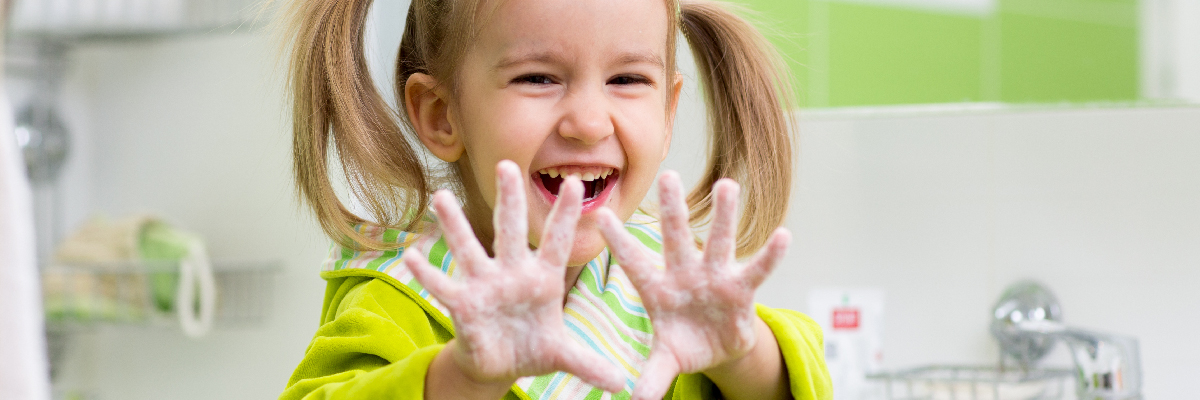
Article at a Glance
A little soap, water, and 15 seconds can make a huge difference in your and your child’s health. By teaching your children to wash their hands, you will be protecting them from the common cold, meningitis, bronchiolitis, influenza, hepatitis A, most types of infectious diarrhea and other serious illnesses. Handwashing can also help prevent food-related illnesses, such as salmonella and E. coli.
The best way to teach your children to wash their hands is by example. Wash your hands with your children and observe their hand washing.
Why should we wash our hands?
Throughout the day, germs build up on our hands by touching others’ dirty hands; changing diapers; direct contact with contaminated surfaces, water and foods; contact with a sick person’s body fluids; or touching animals and animal waste. We can then infect ourselves by simply touching our eyes, nose or mouth. Once we are infected, we can then spread these germs by touching other people or by touching surfaces that they also touch. It is not hard for an entire family to quickly become infected if not washing their hands properly.
How to wash your hands
Wash hands before:
Wash hands after:
Alcohol-Based Hand Sanitizer
Alcohol-based hand sanitizer can be used if you don’t have soap and water available, and they have the added advantage of not drying out your hands. A hand sanitizer should contain at least 60 percent alcohol to be effective. Use care when using hand sanitizers with younger children, making sure the liquid has completely dried to avoid the product entering their mouth or eyes. Be sure the container is stored in a safe place.
Hand sanitizer is not capable of killing all types germs, like noroviruses. If you’re dealing with stomach flu in your home, skip the sanitizer and go right to the sink.
For More Information:
Free printable hand washing posters for kids (University of Nebraska)
Handwashing: Cleans Hands Save Lives (CDC)